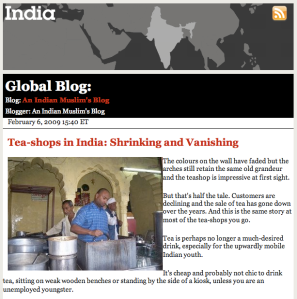
One of the best newspaper industry analysts and practitioners, Ken Doctor, has just published a book, “Newsonomics,” and created a companion website. He asked me to answer some questions about bloggers, the news industry, and how I help bring the two together. Here’s a link to the piece.
In a nutshell, he asked if I was a “blog wrangler.” I told him “blog wranglers” just grab as many bloggers as possible and dump them into blog ghettos on newspaper websites with little regard to organization or quality.
By contrast, as a “blog matchmaker,” I deeply search, carefully analyze, thoroughly vet, and then personally invite only the very best bloggers in a niche to partner with a news or information website to the benefit of both parties.
Read the entire piece on Ken’s new Newsonomics site. And let me know what you think.





 (The INNOVATIONS IN NEWSPAPERS 2009 World Report is out and I have a piece in it called, “Can Top-Quality Local Bloggers Help Rescue Newspapers.” I republish it here for those who have not seen the report. It can be ordered
(The INNOVATIONS IN NEWSPAPERS 2009 World Report is out and I have a piece in it called, “Can Top-Quality Local Bloggers Help Rescue Newspapers.” I republish it here for those who have not seen the report. It can be ordered 























 They have local bloggers EVERYWHERE on their site, even on their specialty sites:
They have local bloggers EVERYWHERE on their site, even on their specialty sites: